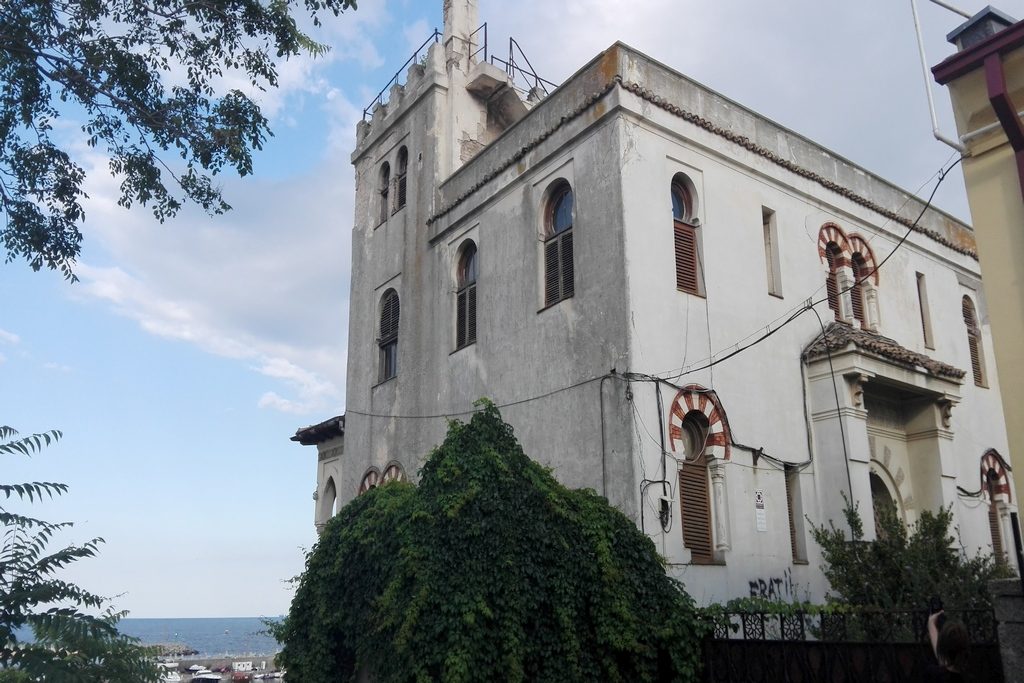

Şuţu villa was built during the nineteenth century, over Tomis Harbour, being one of the most beautiful buildings from Ovidiu Peninsula. The construction was carried out following the plans of the architect Grigore Cerchez, ordered as a summer residence by Michael Şuţu, one of the first numismatists from Dobrudja. Legend says that the villa was built on the place of an older house built by the father of Michael Şuţu, the nobleman Costache Şuţu, during the Turkish period. Michael Şuţu takes over this house about which is said to have had a wharf, being located precisely at the seaside
On this wharf were brought dozens of beautiful maidens from Dobrudja, who were, by water, supposed to got to Turkey, in the Sultan’s harem. Many of them used to cut off their hair in despair, others threw themselves in the Black Sea waters, just not to get to Turkey. That wharf was a place of great sorrow for the residents of Constanţa, whose daughters were obliged to become odalisques in the Sultan’s harem.
Şuţu Palace is a true architectural gem. Its façade is similar to the Arabic one. On the outside impresses with a terrace-gallery which has its roof supported by colonnades with decorative arches, painted on a wall. The interior rooms are decorated in the style of Arabian palaces from Damascus and Algiers, with specific elements of Turkish palaces from Constantinople. The ceilings are polychrome and the wooden interiors creaked when one was climbing or descending. The courtyard of the villa is very beautiful, but outstanding is the spiral staircase, built closely to the wall structure, allowing the rapid descent on the beach. Since it was not inhabited, Şuţu Villa had various socio-cultural functions. It was, for example, the heaadquarters of the Czech Consulate, but also of the Court of Appeal from Constanţa. Currently, the house is closed, but not degraded.
Inside, the arabesques of the Moorish elements harmoniously mix with the traditional Romanian elements, the opulence of oriental ornaments is extraordinary.
Michael Şuţu has been important as being the first numismatist from Tomis, standing out as the initiator of several archaeological campaigns through the ruins of the old citadel. Europe’s leading experts such as Regling or Netzhammer, believed that Şuţu is “the most complete collector of Pontic ancient coins from all around the world.” Much of his collection was donated to the Romanian Academy, and the rest remained in the family’s ownership. After the Romanian state has abusively taken over from Şuţu family both the villa and the extensive surrounding lands, the building was used first as headquarters of the Czesch Consulate, then as headquarters of Constanţa Court of Appeal, so that in the end to be closed and preserved.
